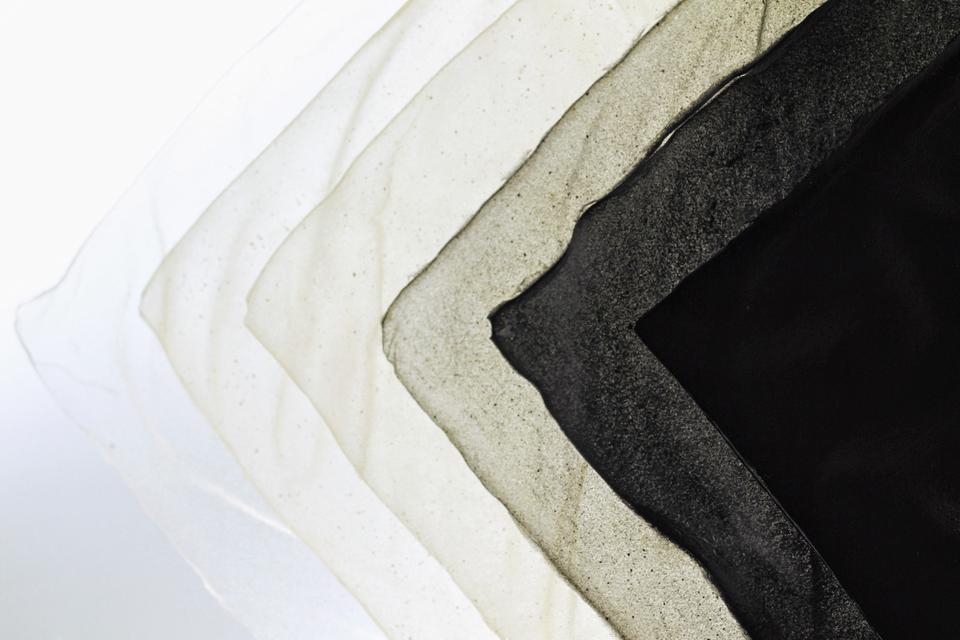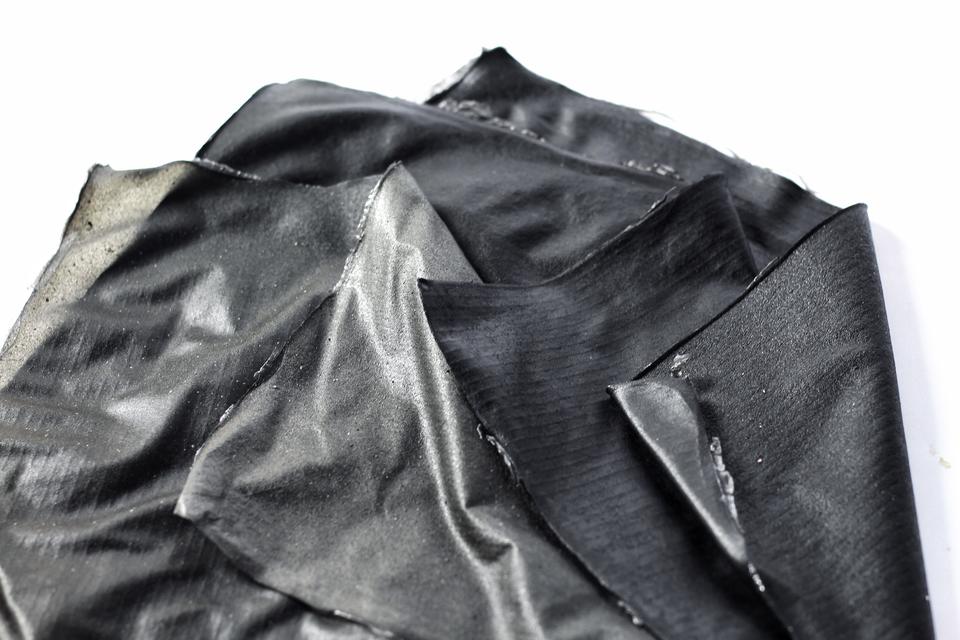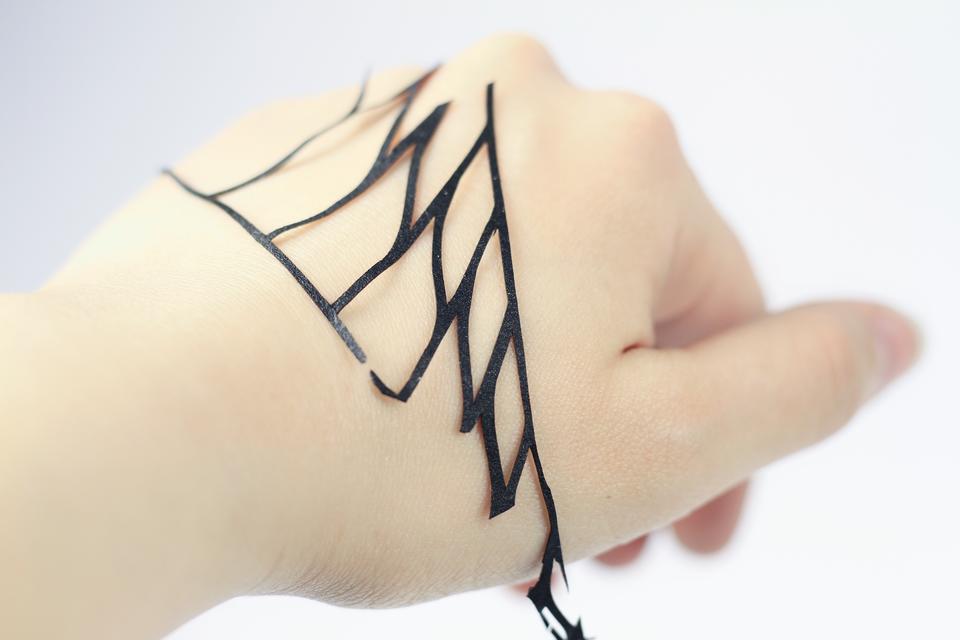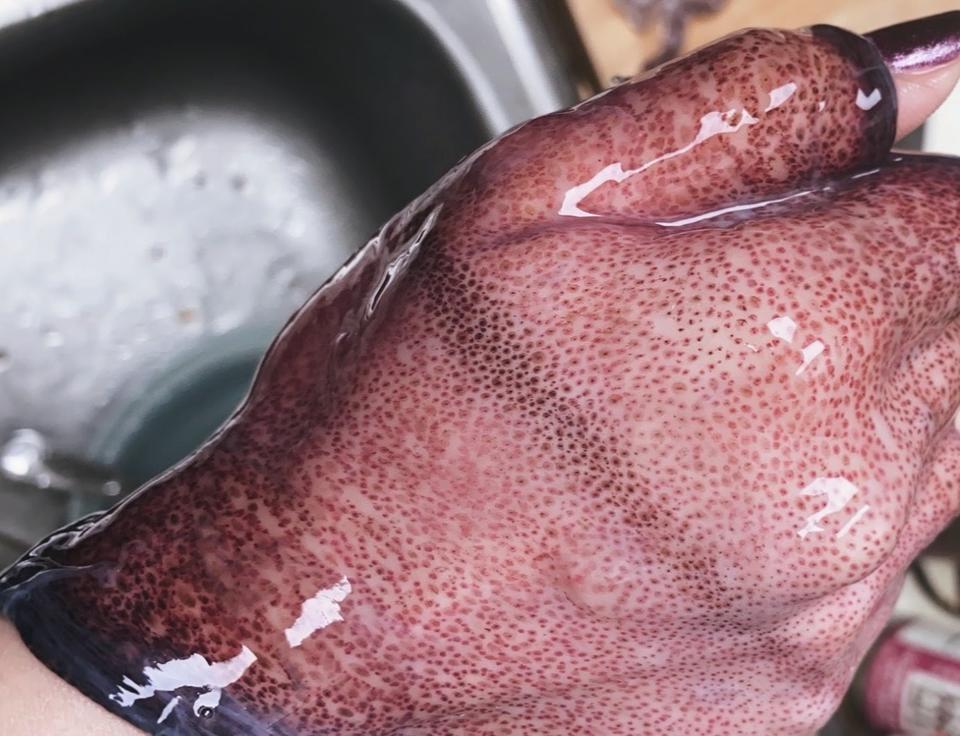Abstract
In order to meet the need for sustainable transition, it is vital for the general public to be aware of the social and ecological interconnectedness within existential climate crisis, local sustainable development, and urban individual’s behavioral patterns. As a method to rebuild interconnectedness, this thesis explores design interventions for fostering action-oriented awareness towards sustainable transition. Jumping out from the current paradigm, it tries to connect the audience to alternative conceptual representations. An integrated theoretical model built around a local contextualized issue is proposed in the thesis, followed by a practice-based case project focusing on Rhode Island Squid Fishery as a proof-of-concept. The model consists of three layers of design interventions: Design as Narrative, Catalyst and Engagement. As the designer and first case practitioner, I have been creating: The visual mapping of the RI squid network; Invisible Skin, the garment made from squid fish waste; and Gladius, the kitchen utensil for at-home squid processing. Through this holistic approach, I want to provide an alternative perspective from the field of art and design, reversing negative, disempowered public impression on the environmental crisis, and further, generating a sustained readiness towards mindful sustainability.
To read the whole thesis book: INTER-
1
How might we be aware of ‘interconnectedness’,
and how might such awareness help urban communities
better transfer into sustainable lifestyles?
2
How can art and design communicate
environmental and sustainable issues?
3
How can design interventions adapt to different contexts?
What is the value of a design-driven process?
Image
Preface
The three questions mainly lead my thesis research and practice. It is always my interest in understanding nature-human relationships and transition design towards sustainability. Considering myself as a multidisciplinary designer and researcher with a background in mechanical engineering and industrial design, I’ve found my previous traditional human-centered problem-solving design practices ineffective in communicating the climate crisis and promoting sustainable development. Throughout my master studies in the design discipline, I see the radical need for an awareness-based transition, that being able to care, self-educate and take actions relies on a sustained awareness incubation, with a strong emphasis on the sense of ‘interconnectedness’ between nature and individual belongings. I’ve been trying to push forward interdisciplinary collaboration on sustainable development by art and design-driven practice in my previous two years of graduate study at RISD. Based on feedback from stakeholders and practitioners, I see such an approach different from the conventional linear problem-solving design process and potentially effective for taming existential complexities such as climate change. Thus my thesis strives to study, research, develop, and practice the holistic, multi-perspective design approach to evoke positive perceptions on, and eventually, the desirability of the transition towards mindful sustainability.
Method
A well-designed overpass bridge can be helpful, in the present moment of transition, facing the challenges from climate change, towards a better, sustainable future.
Based on Self-Determination Theory (Ryan and Deci), which provides a mature and empirically validated approach to examining factors that promote sustained motivation and wellbeing, I propose three perspectives of the design strategy: triggering, communicating and embodied practicing. Through my master thesis, I have been developing an integrated model built around a contextualized regional ecological issue, which has considerable potential to reverse negative, disempowered public impression on the environmental crisis, thus generating a sustained, action-oriented readiness towards mindful sustainability. This model consists of three layers of design intervention: 1). Design as a narrative that rationally records and communicates the contextualized issue; 2). Design as a catalyst that emotionally provokes a dialogue around the local context; 3). Design as engagement, that plays as a follow-up tool-aided actionable activity, enabling the audience to deepen the awareness establishment.
Image
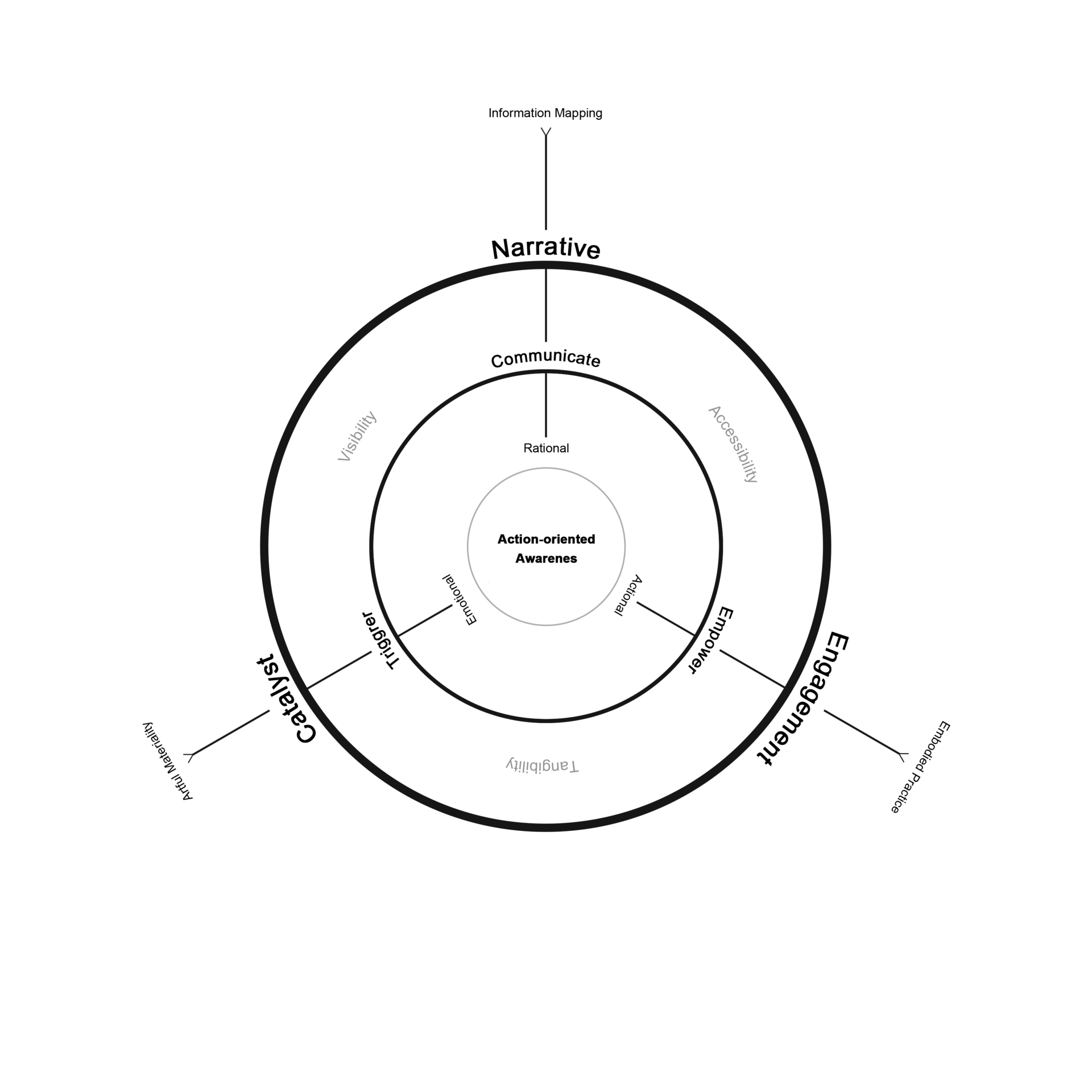
Practice
My following practice-based thesis project acts as a first case study to demonstrate art and design intervention for fostering sustained and action-oriented awareness towards sustainable transition. I chose a Rhode Island squid fishery focal context, considering geographical accessibility.
The multi-perspective approach, in this project, is presented by:
-
Communicating a situation of the local squid network through visual mapping;
-
Crafting a garment using ‘invisible’ fish waste from squid - skin, ink and quill;
-
Designing a kitchen utensil along with a creative cookbook for the audience to engage in at-home cooking and dining experience with squid.
By promoting a new consumption behavior this case project aims at: Reshaping the conceptual metaphor of climate change and sustainability from the existing visual representation stereotype to a new tangible, up close alternative; Connecting local stakeholders: scientific research institutes, non-profit organizations, fishery communities, processing businesses, chefs, retailers and customers.
Image
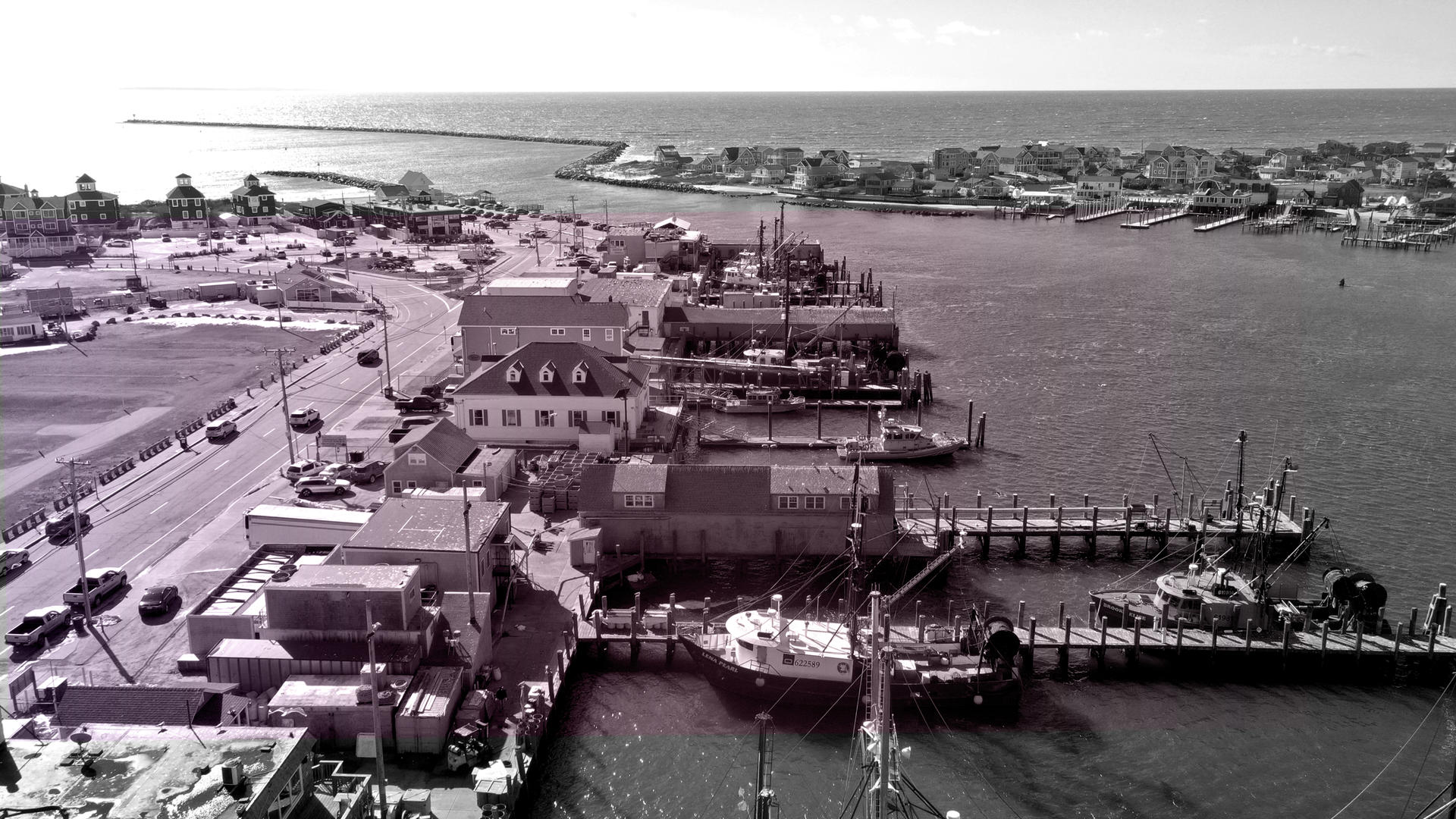
Design as Narrative
Visual Mapping, 2021
Squid has ecological, economical and cultural significance in RI, the “Calamari Comeback” state in the US, while the local RI squid network is facing complicated challenges on viability, accessibility, and sustainability: Local citizens rarely get access to fresh unprocessed squid and don't know how to cook local food source; Traditional squid processing system is unsustainable, creating unnecessary carbon footprint through global transportation and high-concentrated fish waste disposal; Local processed, industrialized packaged squid product, the tubes, and tentacles, consists a high cost on labor, adding surplus value up to three times higher than its original price, which is around six dollars a pound, making this local seafood less accessible to the larger consumers. COVID-19 also adds pressure to the local squid fishery economy as much fewer restaurants ask for supplies.
Why not think of squid when we talk about climate change and sustainability in Rhode Island?
Imagine this scenario:
You live in Providence, Rhode Island, the Ocean State of America, the Calamari Comeback State originally known for its deep-fried squid - tossed in butter, garlic, and hot peppers, typically served with lemon wedges and sometimes with marinara sauce. You come to the local fish market near downtown Providence, buy a pack of whole loligo squid every two weeks from Stuart, the fishmonger who provides fresh-caught seafood from Narragansett Bay, the generous giver of mother nature. You come home, frequently gut the squid, open the latest updated recipe, cook a new dish you never tried before and post a photo of it on your social media. You celebrate the summer of 2030, the glorious creature on your plate, and be cheerful of yourself: You are acting sustainably, helping draw down climate change.
The vision contains the sustainable daily behavioral pattern, mental wellbeing, the availability of local business, and overall, a world-building that stages in the near future, lo-tech, mindfully-satisfying, easy-to-imagine, comfortable-to-live-with. Given the accessibility to local development with designed aids, Urban citizens are invited to join this positive alternative, instead of being forced to see the slogan “THERE IS NO PLANET B” and “WE MUST ACT NOW”.
Image
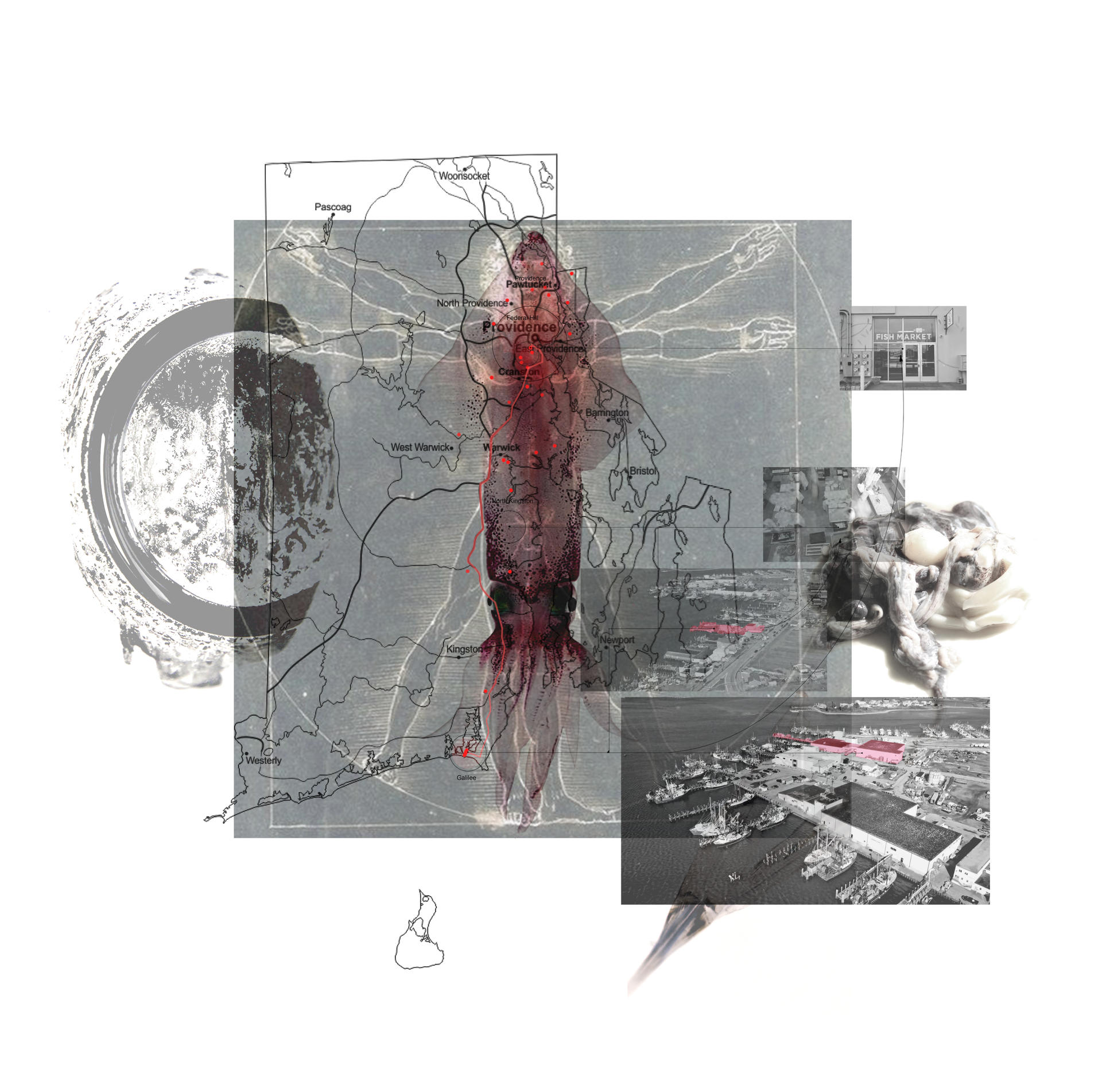
Image
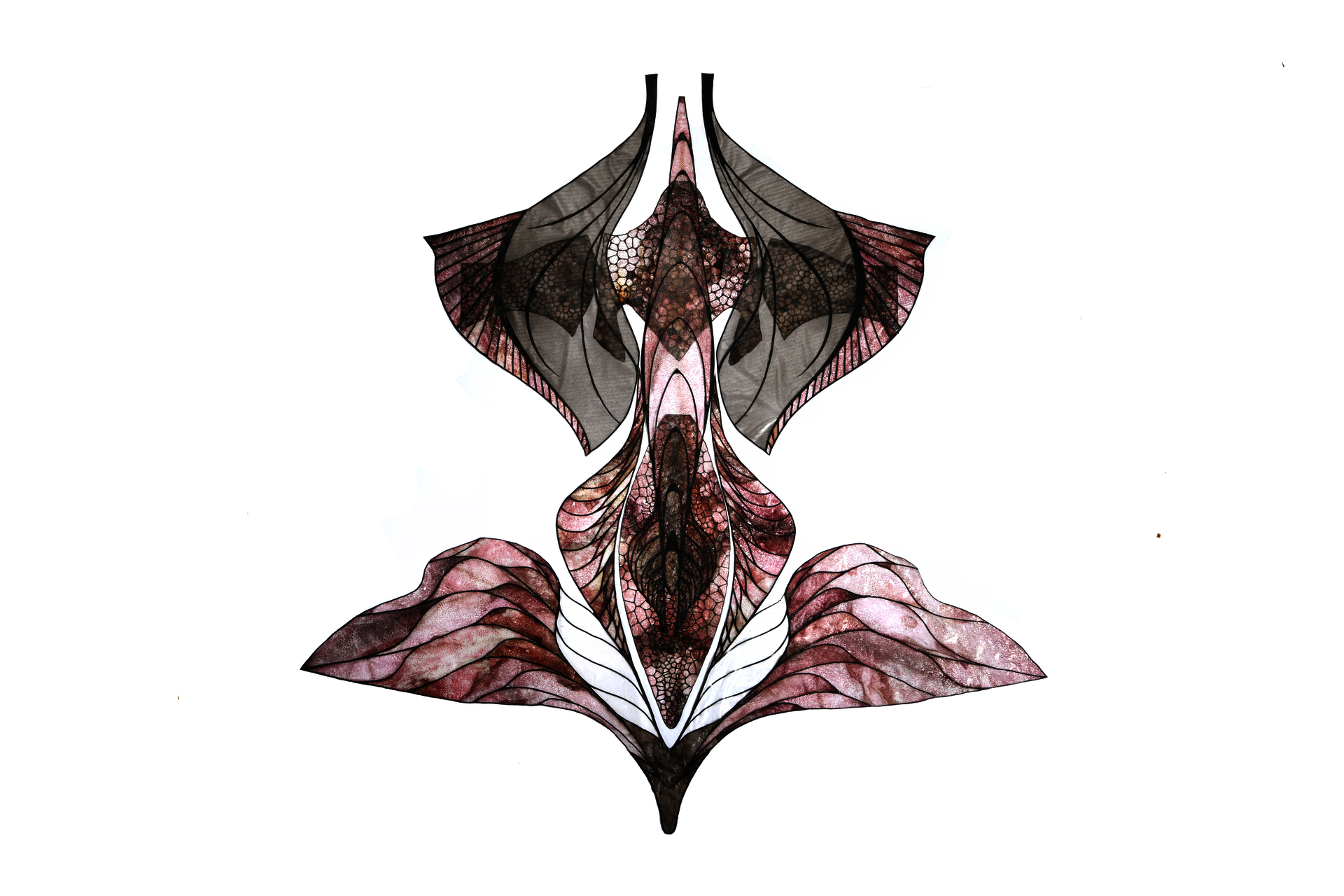
Design as Catalyst
Invisible Skin, 2021
Clothing is primary to embodied experience, both metaphorically as “the second skin” and pragmatically as “the body is always a clothed body”. Beyond embodied intimacy, clothing is also being claimed as “the surfacing of the self”. It is a symbol of protection, declaration and intersection, connecting humans and the external environment - when I say external, I mean the spatial area above and beyond the body flesh. Dressing up, especially in a formal event, is a visual statement - Who I am, Where I come from, and what I stand for. A ‘squid’ garment, in the context of Rhode Island and squid fishery, states the unique identity of endemic nature, as well as a tangible manifesto to a local reformation towards sustainability.
Turning the squid waste into delicacy - I was able to connect with Fearless Fishmarket for my squid source, a local seafood supplier that opened in the southern downtown Providence area five years ago. I set about making fabric materials for the garment, from inedible parts that are taken off during industrialized processing - skin, quill, and ink sac. The dress is derived from whole organic matter - fish waste from in total 52 squids. The biopolymers - chitosan and squid ink powder, are dried, scaped down from vessel and ground. Mixing them with water and vegetable glycerin and agar, the biofabrics are cooked, molded and laser cut as the main structural support. 46 pieces of squid skins are cut and arranged with color gradience and assembled as the mosaic pattern, inlaid within the black frames. The processes of test and experiment with the accessible raw material, along with the design of the dress from biomimetic sketching to digital modeling and eventually fabricating, leverage the audience’s understanding of the existing visual communication, by providing a platform for them to reimagine the relationship with nature.
Image
▲ Process. Material: Squid waste, paper
Image
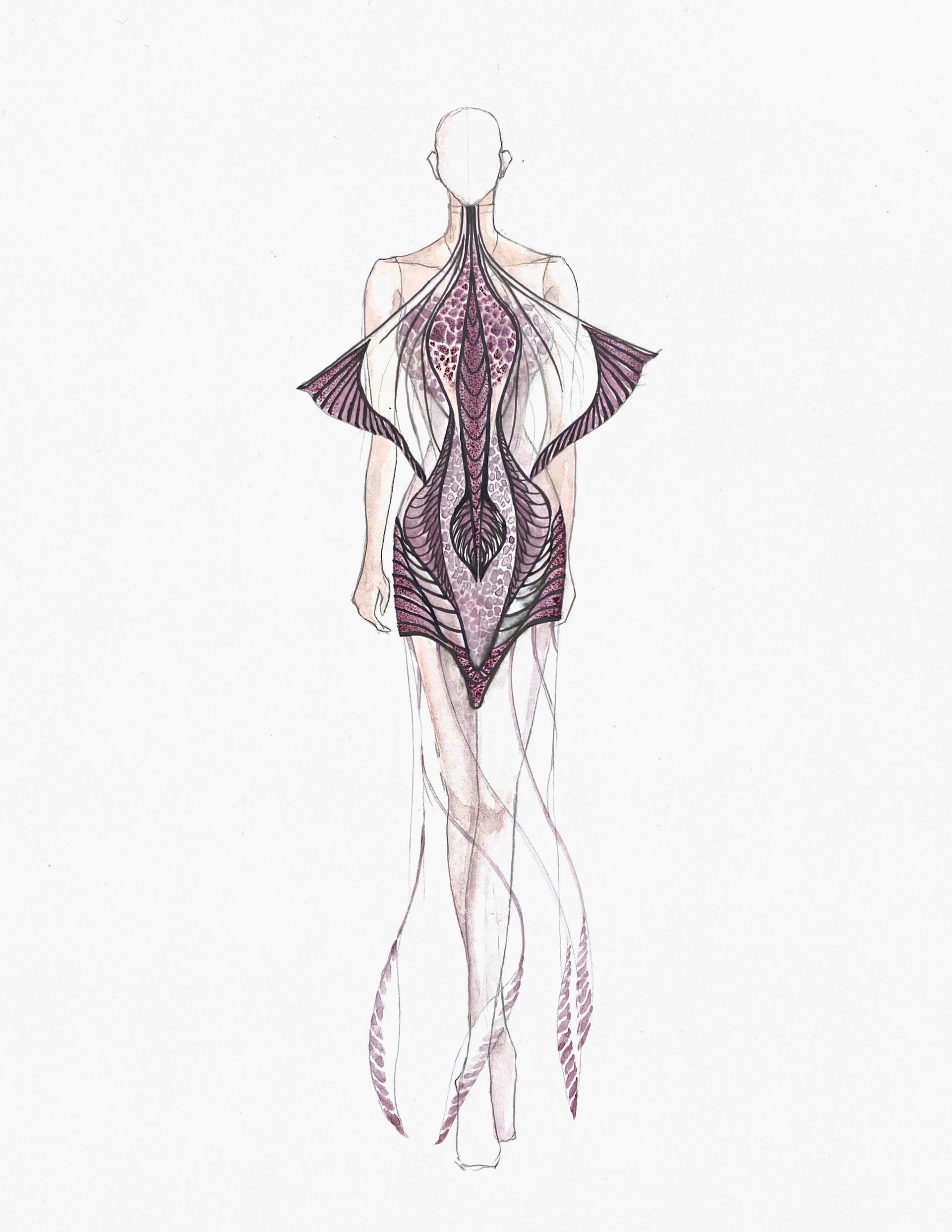
▲ Above: Invisible Skin: Design Sketch
▲ Right: Detail: Material Sourcing, Extracting, and Fabricating
Image
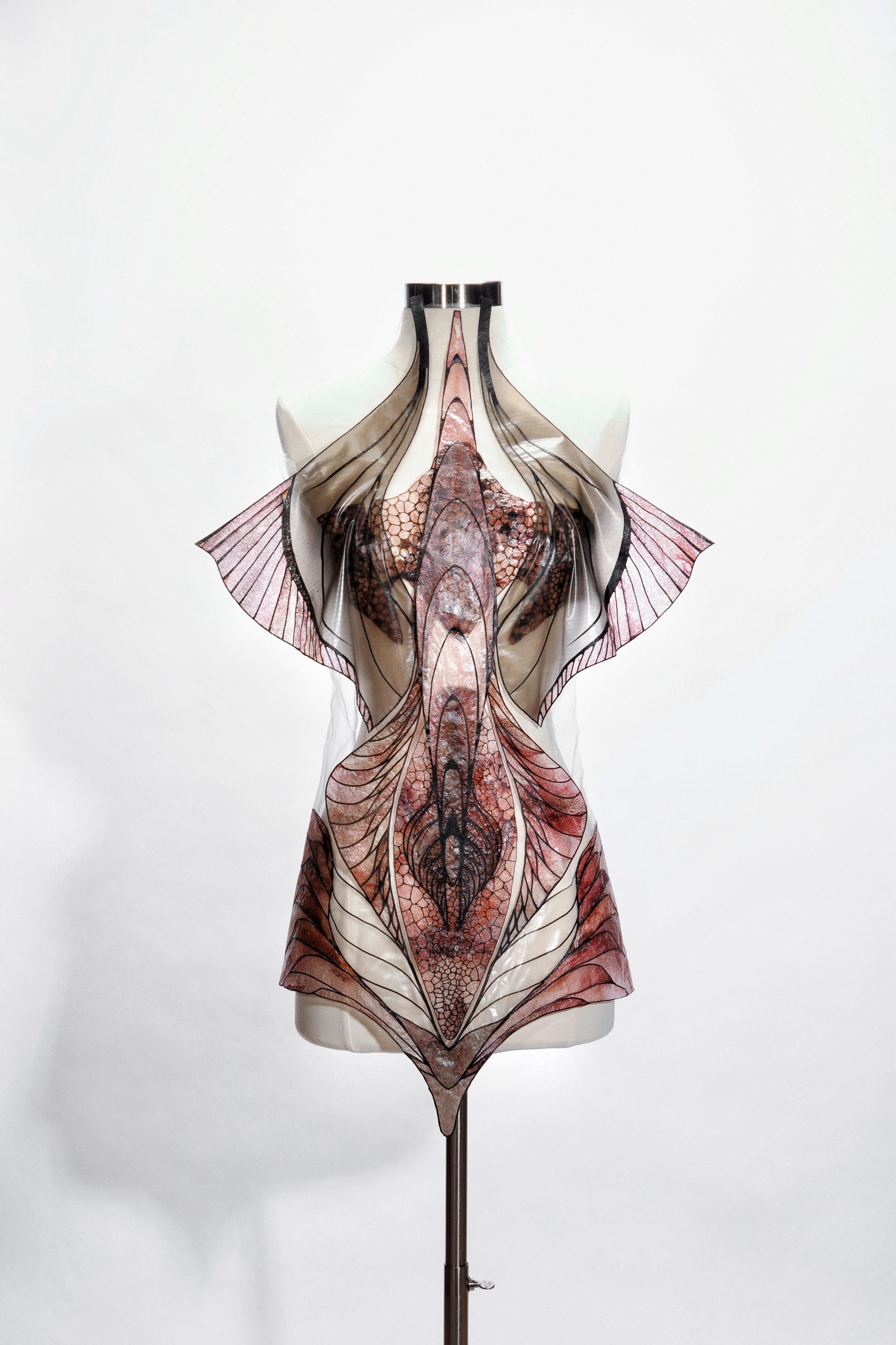
▲ Invisible Skin: On mannequin and model
Image
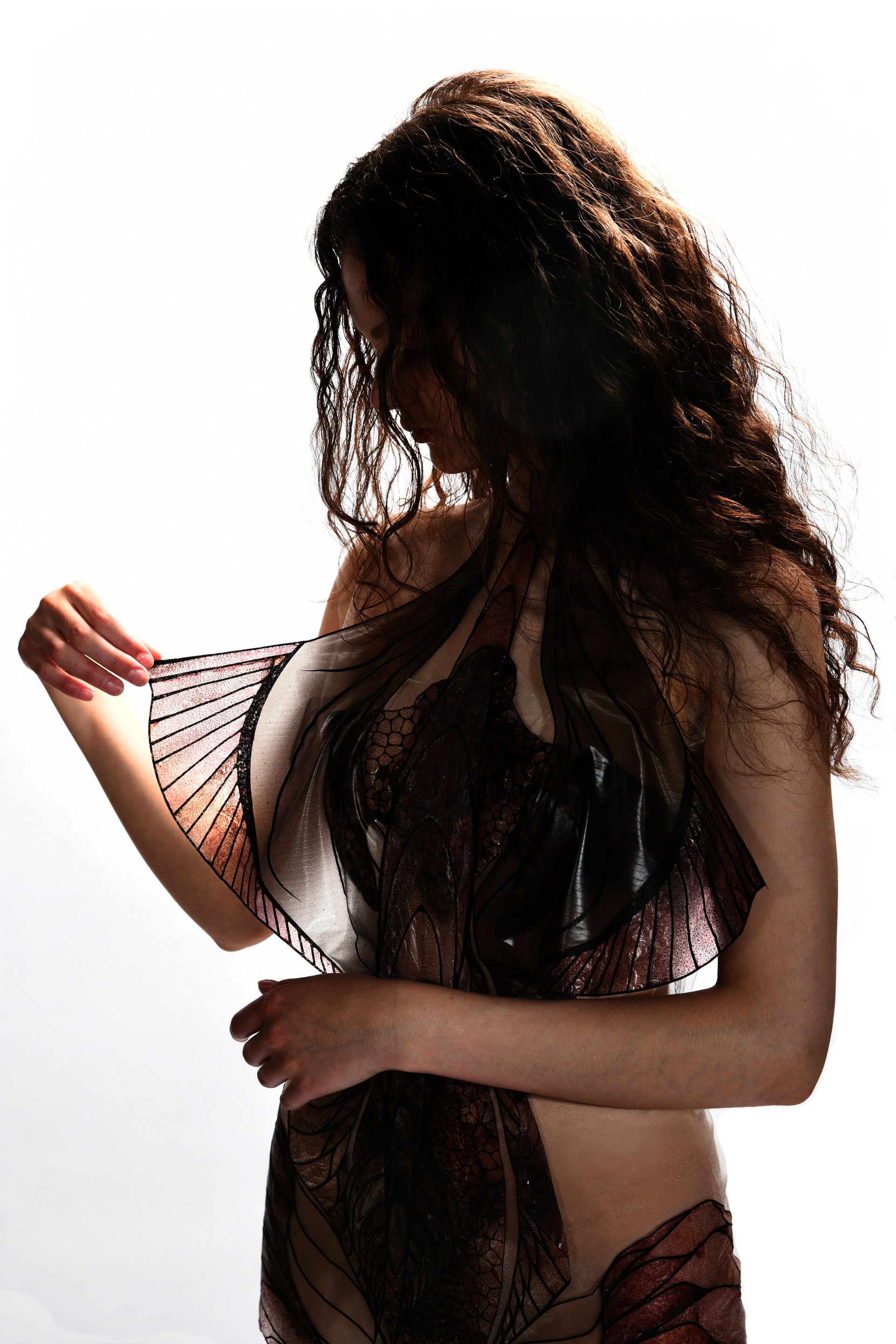
Image

▲ Invisible Skin: Details
Image
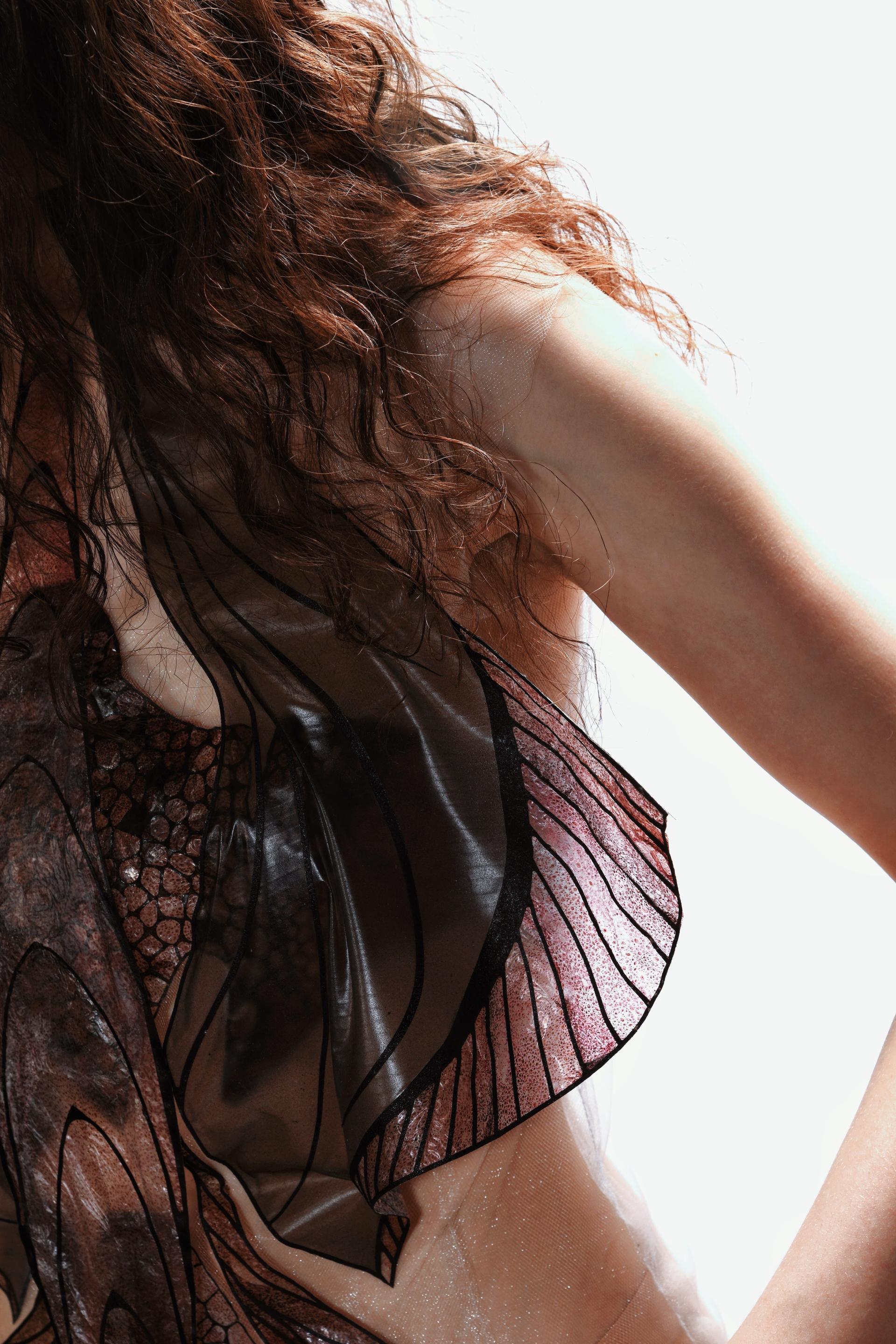
Image
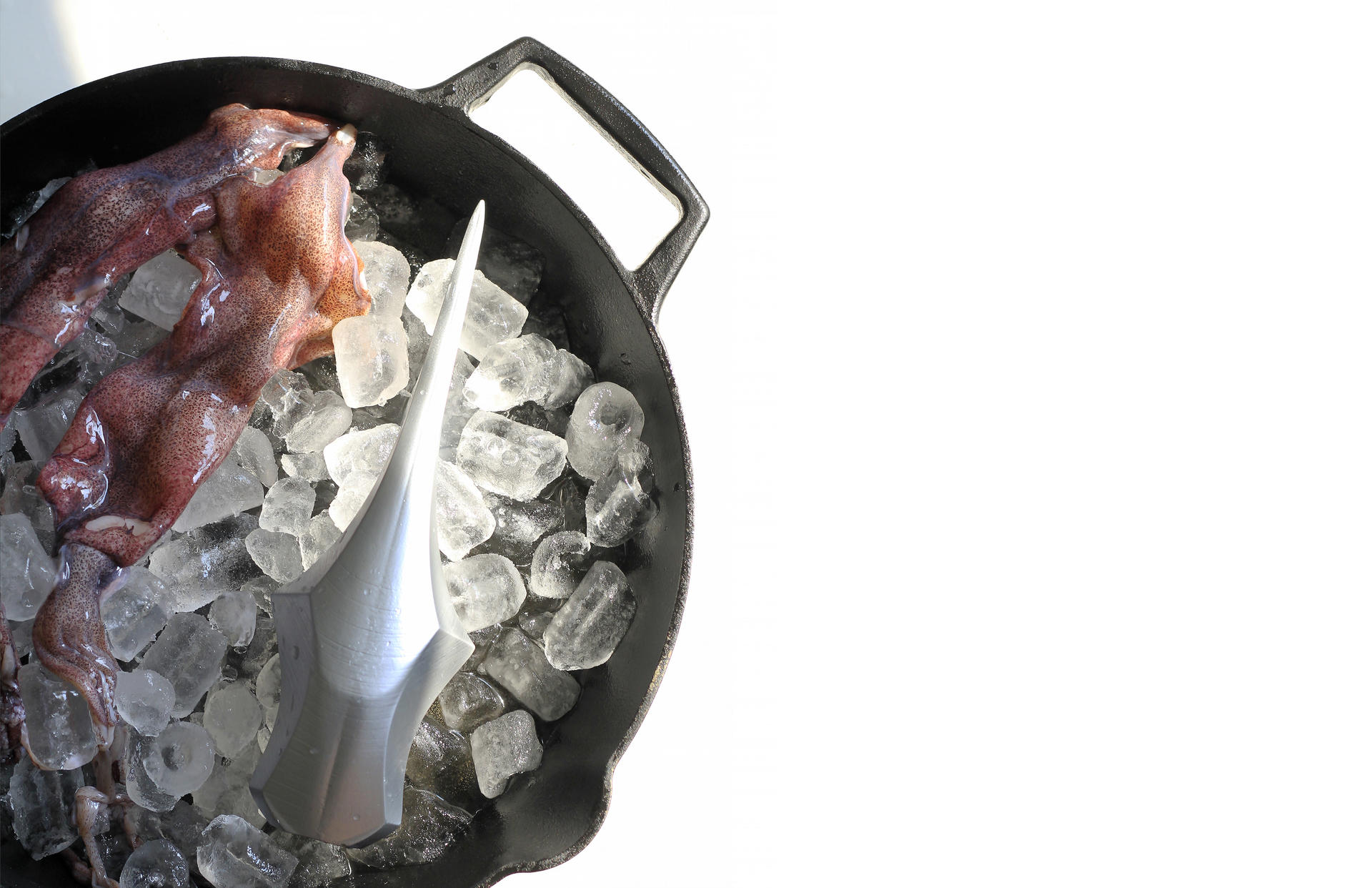
Design as Engagement
Gladius, 2021
Previous research suggests tangible experience and embodied practice synthesize readiness, willingness, and the awareness of interconnectedness as the audience are invited as participants besides information recipients. According to local practitioners, a possible initiative is to invite more people to practice at-home seafood cooking. The strategic promotion is also based on the scientific research that squid could be an alternative animal protein for coastal residents as it’s plentiful and climate-resilient compared to other marine seafood species. Through two months-long self-experience with gutting squid and cooking, as the designer, I have come up with solutions for effective, less-painful home processing experience, and the practice led me to the design of the kitchen utensil. In a design exhibition context, the utensil, along with the cookbook pamphlet and local supplier contact information, plays a role as a souvenir product, offering a follow-up engaging opportunity for audiences to have embodied experience, thus fostering a sustained action-oriented awareness.
Image
Image

▲ Product Development. Material: foam, paper, 3d printed PLA, resin
Image
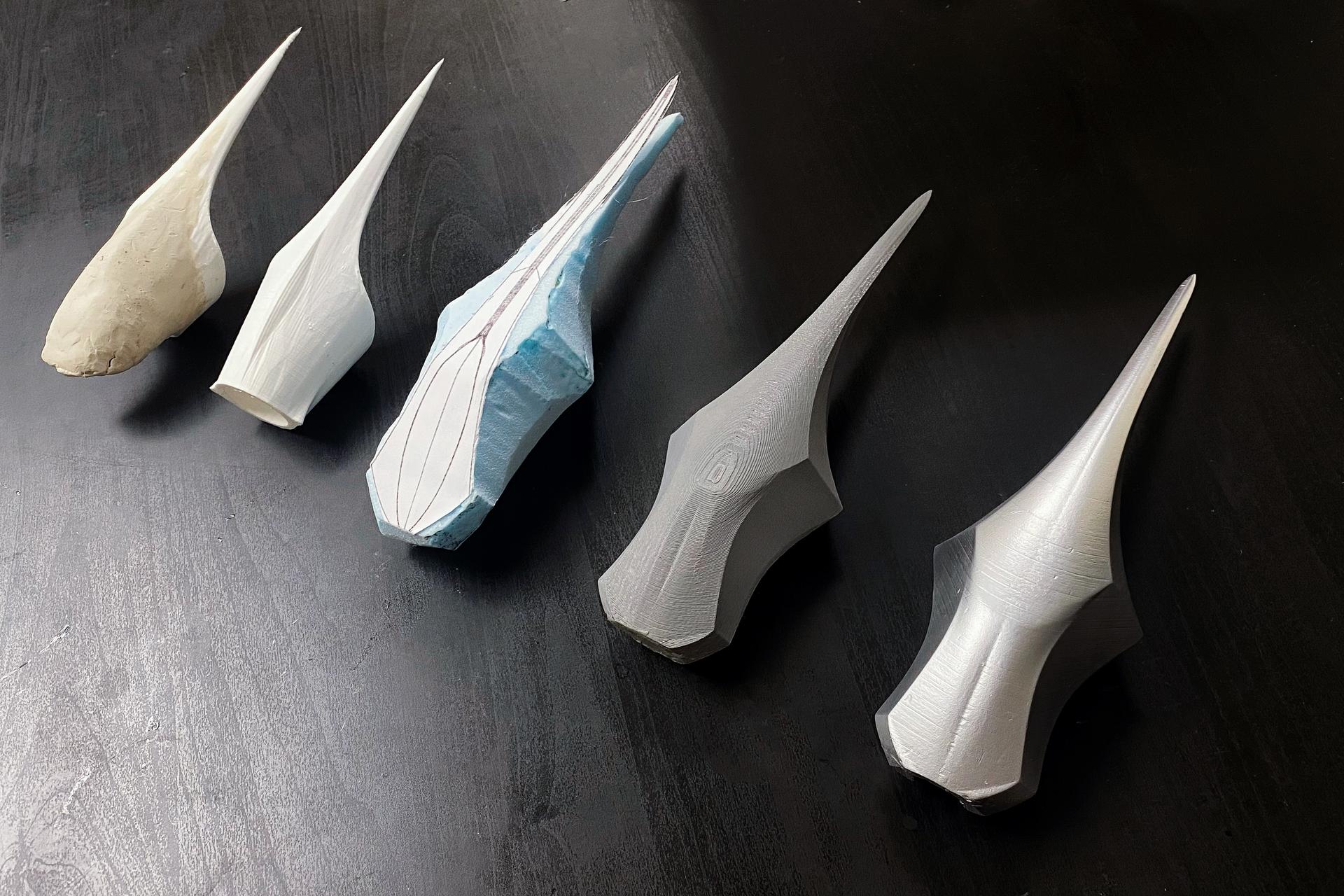
Image
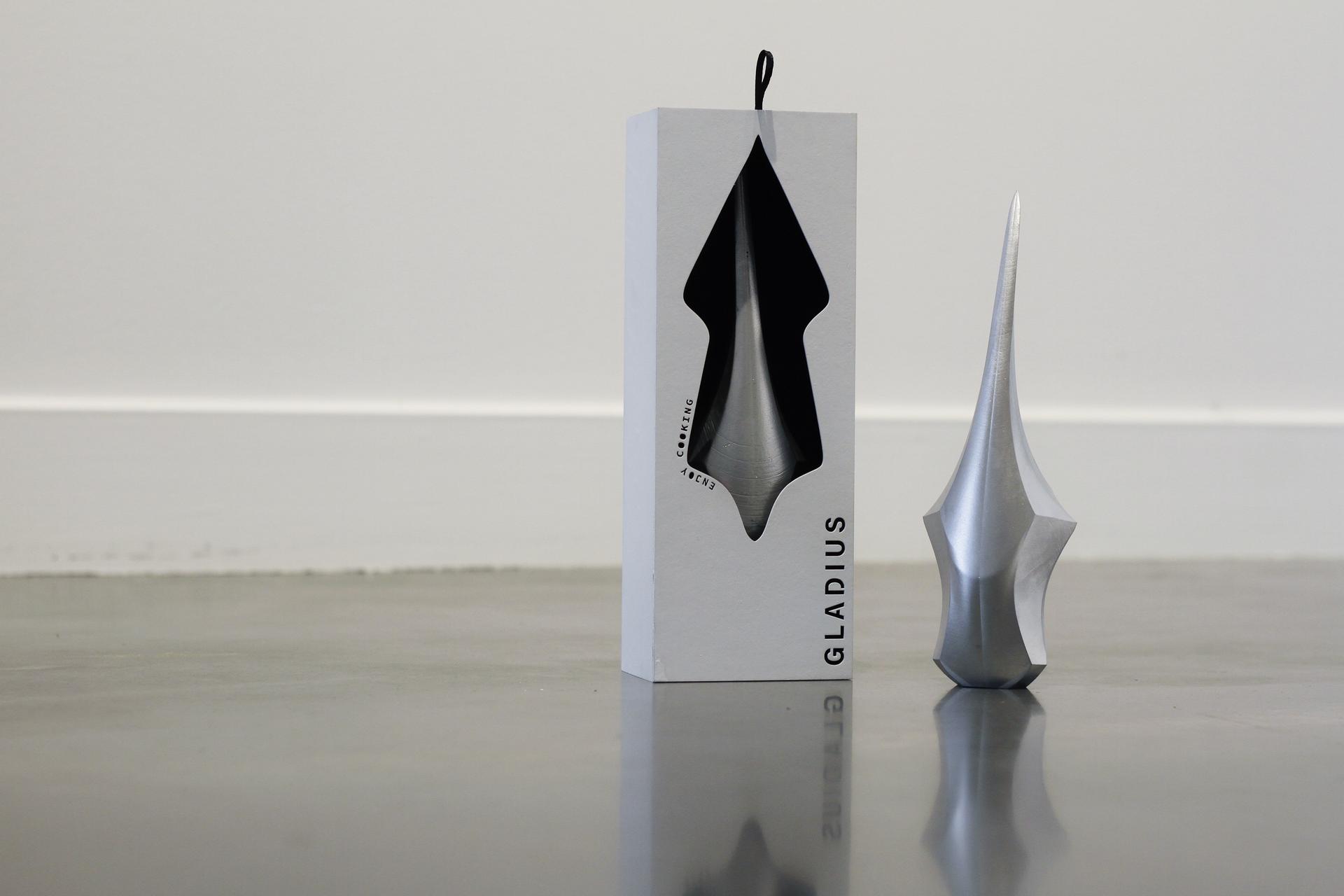
Image
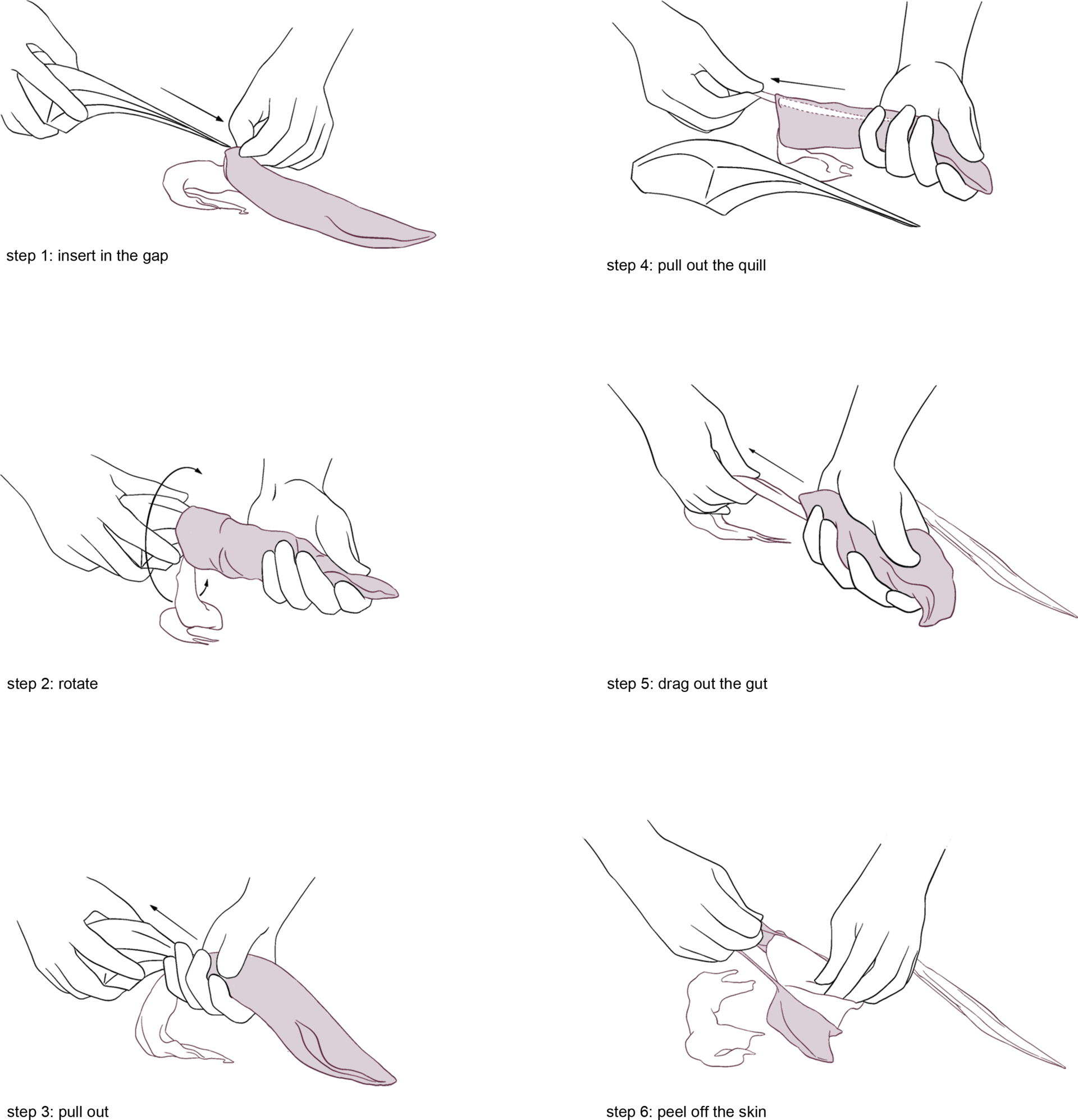
▲ Infographic Pamphlet: Usage guidance, Cookbook, Scientific Education
Image
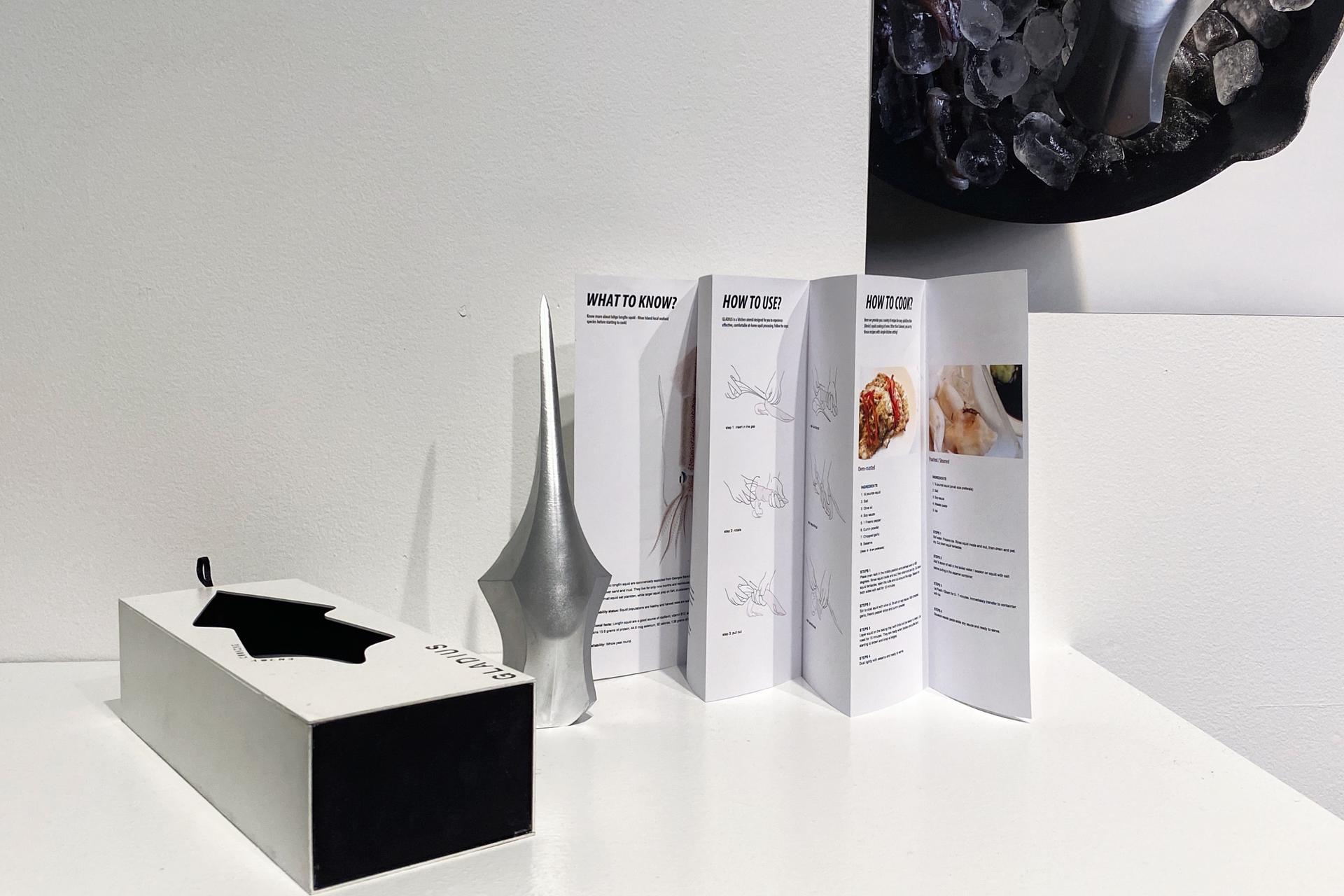
Image
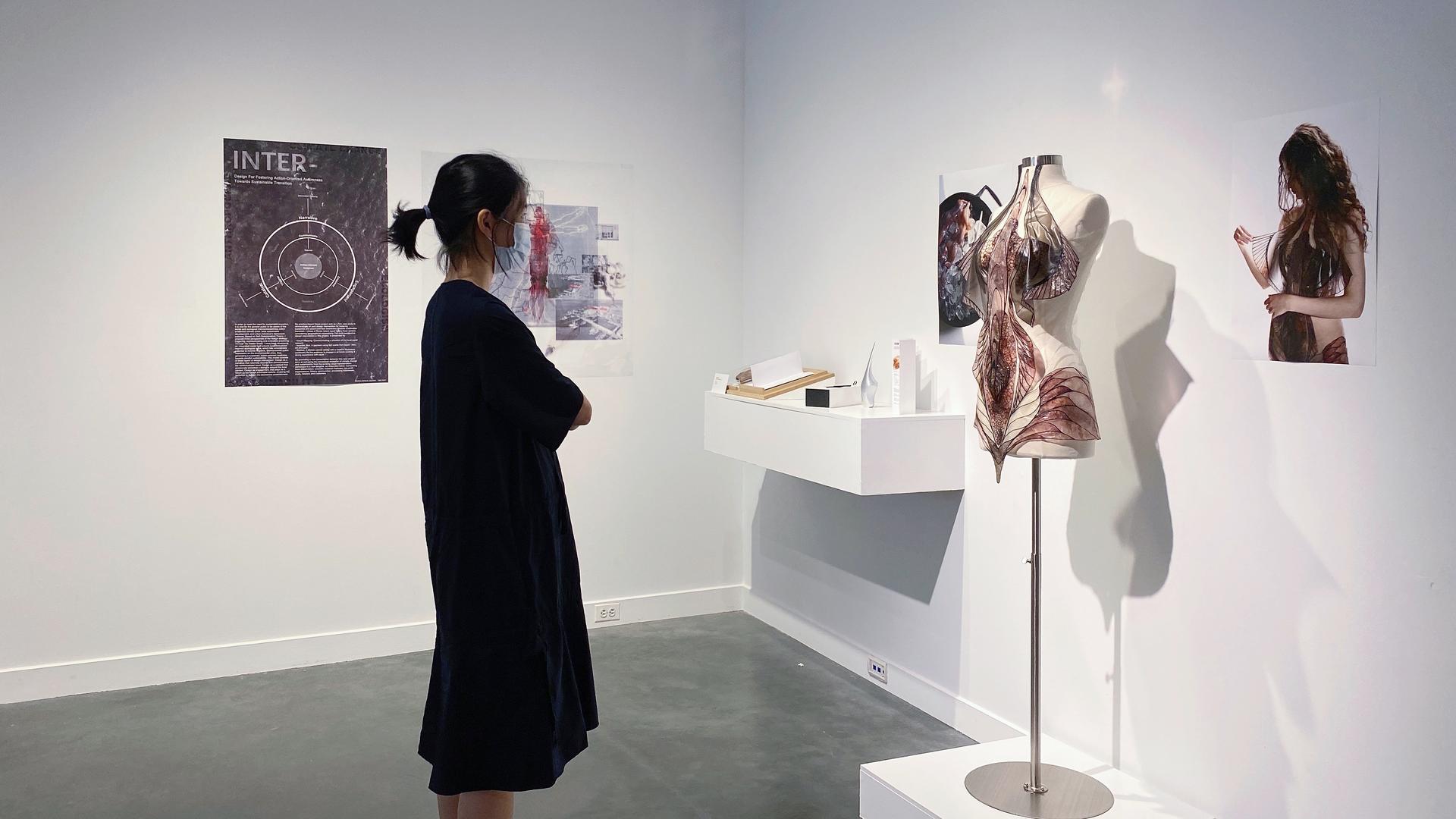
▲ Exhibition Layout (May, 2021)
THANK YOU FOR VIEWING MY THESIS!
To read the whole thesis book: INTER-
To see my other projects: elenadanleihuang.com

